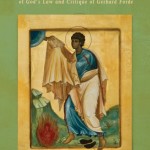Is Jesus Christ a bona fide, Progressive-approved, Social Justice Warrior (SJW)?
Or, to go to the opposite extreme, does Jesus, in Matthew 15:21-28 display abject prejudice and chauvinism — or worse! — to the Canaanite woman?

You decide.
Fascinated by this account and its message for us today, I have done a good deal of digging and invite you to examine the fruit of my – and others’! – labor.
To say the least, whatever one decides about Jesus’ actions in this story, He definitely appears to have not checked his privilege, nor has he been informed about the importance of “virtue signaling.”
That said, don’t think for a minute that Jesus can’t be a social justice warrior. This may well be an apt description of sorts!

At the same time, He doesn’t submit to the world’s definitions of what that means. For instance, the world also has its own ideas about what constitutes “equality,” but God, like a few in classical antiquity, alludes to “equality under the law” — His law, of course. As regards His own demanding, punishing, rewarding, etc. He insists, quite firmly and repeatedly, that He doesn’t “play favorites” (see Acts 10:34-35, Rom. 2:9-11, I Pet. 1:17, Eph. 6:8-9, Col. 3:25).
So what is “social justice”? Again, the point is that He makes the definition (added note: there is a Christ-less social justice which largely conforms to God’s law and may do some good ; and also a ”social justice” that does more harm than good!).
In fact, being that Jesus Christ is God in human flesh we can say that He fully embodies God’s justice, broadly understood. Therefore, we can learn much by examining the whole of His mission as revealed in the Bible.

So let’s start by looking very closely at — and reflecting hard on — this very difficult text. You might want to read Matthew 15:21-28 first.
1. How does the text indicate that the Lord answered the woman?
Answer: The Lord first responds only with silence. Next, he says that He was sent only to the “lost sheep of Israel”. Finally, he seems to imply that the woman is a “little dog.” Why the hesitation and strong response from Jesus? MacLaren gives us a hint when he says that “The meaning of the whole is simply the necessary restriction of His personal activity to the chosen nation. It is not meant to wound nor to insult, though, no doubt, it is cast in a form which might have been offensive, and would have repelled a less determined or less sorrowful heart” (italics mine). Going along with this, MacLaren also asserts “the King of men is first the King of Israel”.
As Walter R. Roehrs and Martin Franzmann write:
“Jesus remains faithful to Israel even when Israel proves unfaithful to God by rejecting the Christ (cf. Ro 15:8). He upholds Israel’s prerogative over against the Gentiles ([15:] 24, 26). He oversteps the limitations of His mission only in response to faith. His help and healing is available ‘to everyone who has faith,’ whether Jew or Gentile (Ro 1:16). Such incidents as these point forward to the command to make disciples of all nations (28:19) and to the universal church” (Franzmann, 31, Con. Self-Study Commentary).
Christ, of course, only “oversteps the limitations” of His earthly mission. For, as can be seen in earlier passages in the book of Matthew, God’s light coming to the Gentiles for their salvation was always in view, in fulfillment of the Old Testament prophecies hearkening of the Messianic Age to Come.[i]
The time for the full number of Gentiles to come in certainly was to come—because of the formal invitation (here we think of the Wedding Feast parable in Matthew 22:1-14)—but not yet. Given what is known about Jewish proselytism from ancient sources[ii], France is much too strong when he says the Canaanite woman “refus[es] to accept the traditional Jewish exclusion of Gentiles from the grace of God” (590). Likewise, when he makes the inflammatory comment that this account shows that in the “new perspective of the Kingdom of Heaven” salvation is to be on the “basis of faith rather than [the Jewish] racial identity” (590). Nevertheless, for the time being, the woman, like Jewish proselytes, was indeed an exception to the rule. Not a rule to fully exclude Gentiles[iii]—for one thinks immediately of the book of Jonah, as well as Rahab and Ruth in Jesus’ genealogy!—but a rule to focus first on the “natural family” selected by God (see, e.g. Is 1:2, Ex. 4:22, Hos. 11:1). Even as, ultimately, faith alone granted real eternal life in God’s visible church both now and in the life to come.
On the one hand, any Jew may have rightly said “We are Abraham’s offspring,” but on the other hand, ultimately it is faith which proves more critical than matters of blood. “[T]he unreceptive Jews,” Epiphanus the Latin says, “were made into loathsome dogs out of children, as the Lord himself said in his Passion through the prophet: ‘Many dogs surround me; a company of evildoers encircle me.’” (Sionetti, 29) And with the Jewish rejection of Christ, the invitation to the Gentiles was formally extended. Even as Paul writes in Romans 15:8, “…I tell you that Christ has become a servant of the Jews on behalf of God’s truth, so that the promises made to the patriarchs might be confirmed,” those promises, of course, blessed the Gentiles as well – through Abraham’s Seed (ultimately singular in Christ).

2. What is the driving force of Jesus’ words in verse 24?
Answer: Gibbs says the genitive verb tense in verse 24, like in Matthew 10:6, is probably epexegetical: “the lost sheep that are the house of Israel” (787). Regarding his calling his own people “sheep,” Lenski states: “all his love and kindness toward his nation is revealed. He thus also denominates himself as their true Shepherd” (597). “House of Israel,” he goes on to say, is a “stereotyped title of high honor for the chosen nation” (597). In addition, Gibbs favorably quotes Davies and Allison in a footnote (2:557): “Quite simply, the verse makes it abundantly plain that the biblical doctrine of Israel’s election must be taken seriously” (787) (he also notes Romans 9:4-5 in this regard [786]). Also commenting on this phrase, Hillary of Poitiers writes “Not that salvation was not to be imparted also to the Gentiles, but the Lord had come to his own and among his own, awaiting the first fruits of faith from those people he took his roots from. The others subsequently had to be saved by the preaching of the Apostles” (28, Simonetti, italics mine). And what might passages like I Timothy 5:8, and Romans 9-11 (in particular, see, e.g. Romans 9:4a, 9:7b, 11:18b, 11: 24, 11:28-29) have to do with this? Here, we are reminded that God’s people were the Jewish nation, or ethnos[iv], and that such a concept cannot – and therefore should not – be separated from realities of heritage, ethnicity, and blood. There is a good reason the Apostle Paul speaks so strongly about his “kinsmen according to the flesh, (see Rom. 9:1-5)” and even pagan authors like Cicero and Epictetus can see that “Nature produces a special love of offspring,” and “Natural affection is a thing right according to Nature,” respectively (Lewis, 96, 99).[v] We might say this: God loves the world in this way, that He becomes one of us, biologically, first as regards the Jew, and then as regards the Gentile (i.e. the “nations,” the other members of humanity).

3. What are some of the interpretations of “dogs” in verse 26?
Answer: The medieval commentator Theophylact bluntly says that “Christ speaks of her as a dog, because the Gentiles led an unclean life and were involved with the meat sacrificed to idols, while the Jews He speaks of as children” (133). MacLaren catches a wiff of the potential power of such words when he forthrightly states “From the lips accustomed to drop oil and wine into every wound, came words like swords, cold, unfeeling, keen-edged, fitted and meant to lacerate… His refusal was a real refusal, founded on the divine decree, which He was bound to obey.” Luther, intriguingly, suggests that in not directly calling the woman a dog, Jesus is “leaving it undecided whether she is a dog or not” (152). But, whatever the case indeed may be, what could potentially be behind this term? Beare says the phrase κυναρίοις, or “little dogs” is “[b]rutal,” a “violent rebuff,” and that “these words exhibit the worst kind of chauvinism” (342, Matthew, quoted in 599, Osborne). Osborne says the major debate is whether or not the diminutives had “lost their force by the first century”. He notes that in 15:34b the diminutive does retain its force (the “small fish”), so it might here as well (599). In any case, in the next verse, he says he agrees with Dufton, that “here the woman switches to the household pet” (since “the image switches to the master’s table”) (599-600). Lenski also sees a vital significance in the “pet dogs,” saying the Gentiles, like the scavenger dogs of “the Orient,” were “ownerless, unclean in every way, always to be avoided.” “Little pet dogs” on the other hand, have owners who keep them in the house and feed them. He says that this “does not refer to all the Gentiles in the world but only to such as lived among the Jews or came into contact with them and could thus in a way obtain some of their blessings” (598). Going along with this, Basser cites rabbinical sayings about dogs from Jesus’ time that are not negative, saying Matthew’s account shows “the genius of his ostensible simplicity, which is complex upon detailed examination” (399) (this also adds another layer of complexity to Luther’s contention that Jesus is “leaving it undecided whether she is a dog or not” [152]!) Hilary of Poitiers really diminishes and relativizes the scandal, saying that “next to Israel the pagans received the name dog!,” meaning only that they received less affection from Him (172). Schaeffer also decidedly does the same, and reads much into the text: “doubtless the tender tones of the Saviour’s voice, the winning expression of his countenance, and the softened Greek word for dogs…all combined, like the colors of the rainbow while dark clouds still spread their gloom over portions of the sky, to teach the woman still longer to hope and to believe” (372). Decidedly on the other hand, France simply notes that “[a] ‘little dog’ is no less unclean that a big one!” (594-595)[vi] Likewise for Gibbs, softening Jesus’ comments by highlighting the fact that Jesus uses the diminutive form of dog is “uncertain at best”. He notes that “Jesus states the salvation-historical primacy of Israel in extremely blunt terms” (see Ex 22:30, Deut 23:19, 1 Sam 24:15, 2 Sam 16:19, and Rev. 22:15) (783). There is no doubt that this is in some sense the case. Is there nevertheless room to posit, as Luther does, that he opens up the door for the woman to decide whether she is indeed a dog – or perhaps, given the information above, decide what kind of a dog she is?

4. What are some ways that commentators have blunted the sharpness of Jesus’ words?
Answer: Chrysostom, noting that “the more the woman urged her petition, the more [Jesus] strengthened His denial,” bluntly states that Christ acts “backward” here (Aquinas). Modern liberal scholars, even including some more conservative ones (France, 590-591, 595), make the case that the woman helped Jesus to expand his boundaries or counter his prejudices about things like race and ethnicity. Case-Winters, for example, talks about how Jesus’ humanness is on display here, as he is “caught with His compassion down,” but that the woman “teaches Jesus about a wider divine embrace” (202). Some also suggest that Jesus here may have his tongue firmly in his cheek, be giving “a wink and a nod”, playing “hard to get”, etc. (see, e.g. France, 590-591)[vii]. Regarding early church (e.g. Chrysostom, Theodore of Mopuestia [Simonetti, 30]), medieval (e.g. Theophylact [p. 132], Thomas), and Reformation-era commentators (e.g. Luther, Calvin, Matthew Henry), it is common to read that Jesus does what He does in order to test or reveal the persevering faith of the woman. Against this flow, Lenski perhaps overstates his own case a bit when he says that because Jesus really was focused on his mission to Israel (“I was not commissioned save to the sheep that have been lost of Israel’s house”), we need to give up the idea, which is also “so offensive to moral feeling,” that Jesus “pretended to be hard and tortured the woman with uncertainty for the purpose of testing her faith in order then to praise her” (596, italics mine). Jerome says that Jesus, “unwilling to give his detractors an opportunity to accuse him,” does not want to contradict what he said to his disciples in 10:5: “Do not go among the Gentiles or enter any town of the Samaritans” (Simonetti, 29). More specifically, he adds that Jesus says He is sent first to Israel so that “where they would not receive the Gospel, the passing over to the Gentiles might have just cause” (Thomas). Although Gibbs says it is “useless to conjecture” why Jesus is at first silent (785)[viii], commenting on the phrase “it is not good” in verse 24, he nevertheless seems to suggest curiosity as a possible element later on: “Now Jesus wants to know this: does the Canaanite woman really know who he is, or are the things that have come out of her mouth (“have mercy on me, Lord, Son of David”) just words and no more?” (787). Jeannine K. Brown, commenting on Jesus’ remaining silent at first, has the following wisdom to share:
“Commentators and other readers are prone to rescue Jesus at this point by attributing altruistic intentions (e.g., he is testing the woman to draw out her faith). Yet unless we provide motives for the characters, the story reads as if Jesus expresses hesitation in granting healing to a Gentile (15:24, 26), as in 8:5-7 (see comments there [she says 8:7 should read: “Shall I [namely, me, a Jew] come and heal him?”]). The problem with importing such motives is that the text gives no particular clues for doing so. This fits the practices of ancient characterization, which tended to avoid providing the thoughts and motives of its characters” (179).
5. In what ways is the woman an “exception” to Jesus’ rule?
Answer: According to Lenski, “Jesus never hesitated to heal Gentiles as long as no wrong deductions could be drawn from these acts” (see Matthew 4:24 and 8:28) (596). Jesus granted this woman’s request, but no other teaching or healing took place in “this pagan land”. In general, Jesus did not do this because of “the divine plan of redemption” (597). Rather, it was critical that it be understood that the blessings of Jesus’ mission “be set before the Jews alone” (599). In like fashion, Anselm says “The bread is the Gospel, its miracles and other things which pertain to our salvation. It is not then meet that these should be taken from the children and given to the Gentiles, who are dogs, till the Jews refuse them.” (Gloss., ap. Anselm, in Thomas) In other words, the woman is an exception to the general rule. Nolland makes the same point: “[t]hough occasionally construed so, this is not a story of Jesus reaching out to the marginalized” (635).

6. In the book Not by Birth Alone: Conversion to Judaism, Rabbi Alexander M. Schindler argues that [even in Jesus’ day], “Jewish ‘chosenness’” is defined “not as exclusive but as exemplary; not as separatist but as representative; not as closed but as open; not as rejecting but as all-embracing and compassionate” (8) Is this compatible with the view of the Gentile mission presented in the book of Matthew? Why or why not?
Answer: Speaking of exceptions to the rule (see preceding question), Nolland also has a powerful summary worth quoting in full:
“The woman accepts that she has no claim to be put on a par with the Jewish people in benefiting from God’s present intervention for the sake of his people, but even the dog get scraps, and that is all she asks for. This is likely to seem very demeaning to present sensibilities, but not to Matthew and not to the Jewish tradition more broadly. In the biblicamaterials they saw Gentiles, when beneficiaries of God’s activity, as fringe beneficiaries (footnote: “E.g., Is. 2:2-4; 14:1-2; 45:14; 60:10-14; Je. 16:19; Mi 4:1-4; Zc 2:11; 8:0-23; 14:16-19. There is a wider vision in Is. 19:18-25; 49:6; 56:3-8, etc) Mt. 28:19 breaks through, not the sense of Jewish privilege, but the marginality of Gentile involvement. The existence of such Gentiles as this woman prepares the way, but despite the popularity of the view that this is a story about how Jesus changes his mind, the present episode can in no way be represented as a breakthrough. Jesus does not change his mind at all (vv. 24, 26 are in no way retracted, even by implication); what becomes clear to him is what is appropriate in the case of this particular woman” (635-636 ; For more comments regarding Nolland’s take, see my previous post on Matthew 15:21-28).
However, having pointed this out, we must go further. For we can gather that following Christ’s resurrection we should not necessarily talk about how the Gentiles are raised up — or, perhaps — how the Jews are brought down to their level. Rather, faith in Jesus Christ — who makes us all one — is now the consideration that challenges us, in some ways at least, to reflect critically on issues of earthly heritage, identity (including “self-determination”), privilege and status (the book of Philemon should challenge us in spades here).
Even as we are also always reminded, for example, of the fundamental responsibility to care for one’s relatives (I Tim. 5:8) and to “especially…do good to… the family of believers” (Gal. 6:10).
Take some time to read what Paul has to say in Colossians 3:1-17 about what the life of Christians should look like, particularly reflecting on verse 12: “Here[, as the new man,] there is not Greek and Jew, circumcised and uncircumcised, barbarian, Scythian, slave, free; but Christ is all, and in all.”

There is clearly great profundity and mystery here! Positively, just what does this mean for our life together? In order for any of our families, churches or nations to joyfully “live and move and have their being” (see Acts 17) why should we think anyone else’s must “lose”? And, negatively, how should we respond to anemic — and even utopian — ideas of “social justice” clearly not in line with God’s will in Christ?
No doubt, these are questions with which Christians will need to seriously wrestle until Christ’s return.
FIN
(the full paper/Bible study I did on Matthew 15:21-28 can be downloaded here)
Images:
Endnotes:
[i] From the wise men visiting Jesus, to the Roman Centurion (“many will come from east and west and recline at table with Abraham, Isaac, and Jacob in the kingdom of heaven”), to the healing of the Gentile sick and demoniacs (see 4:24 and 8:28, respectively) – it is clear that Jesus is the primary way God’s promise to Abraham — that his children would be a “blessing to the nations” (see 10:18, 24:14 and 28:19 as well) — was to be fulfilled (even as the Jews themselves reject the Kingdom – see 21:43). Just two chapters before in Matthew 12:19-21, we hear about the salvation He is bringing to the Gentiles.
Therefore, Frannzman goes on to say:
“Her faith is great, for she submits holy to God and assents wholly to His way (through Israel to the world, 27), sees that the table which God set for Israel is rich enough to supply all nations (27), and is willing to accept God’s grace on the lowest terms of beggary – she can pray from under the table” (31).
Augustine calls this woman a type, or figure of the church, and goes on to connect the events in this event with what Paul describes in Romans 11:
“….the apostle says that the wild shoot was grafted in because of humility. The woman manifested this humility, saying, ‘Yes, Lord, I am a dog. I desire crumbs.’ Jesus found favor also with the centurion, who had this humility” (Simonetti, 31) (note: here, of course, Augustine, like Luther in his earlier years, might give the impression that salvation is by humility).
[ii] See, e.g., Not by Birth Alone: Conversion to Judaism (ed. Homolka, 1997), particularly the essay by Rabbi Alexander M. Schindler, and Crossing Over Sea and Land, Michael Bird (2010). In his conclusion, Bird says “I do not doubt that virtually every Jewish group thought that being initiated into the commonwealth of Israel and living under the Torah was good and desirable for Gentiles, whether it was politically expedient was another matter” (151).
[iii] Epiphanius the Latin says that the woman, in responding to Jesus’ comments about dogs, is saying that “you came to the Jews and manifested yourself to them, and they didn’t want you to make exceptions” (ACC, 29). This seems uncharitable on Epiphanius’s part.
[iv] Biblically, earthly nations are inseparable from the concept of “ethnos,” from which we get “ethnicity”. In like fashion “genos”, from where we get “genes,” can be translated as offspring, family, race, nation, kind, or even sex. We see that these terms involve notions of blood and parentage, even if “ethnos” is more closely connected than “genos” with our notions of culture.
Christians are first and foremost citizens of heaven, not earth. In, but not of the world, their “dual ethnicity” means that they belong first to the kingdom of heaven, and are members of “God’s chosen ethnos” (I Peter 2:9). Though all are one “in Adam,” God has, post-fall, also ordained a diversity of nations (see Acts 17:26), from whom He will obtain worship (Rev. 7:9). Ultimately, the Church is a new Nation that re-unites, by faith in Christ, persons not just from this or that race, tribe, or nation, but from the entire human family – making one Nation, or more accurately, Kingdom.
[v] Generally speaking, the natural family offers or should offer provision and protection, an echo of eternal salvation. Human beings are certainly less inclined to abuse our own children, and, speaking governmentally of modern civil society, the unavoidable truth (which people nevertheless attempt to avoid) is that those who take the time to have children and to raise them well will end up subsidizing those who do not do these things.
[vi] “References to dogs in biblical literature are overwhelming negative, and when the term is used metaphorically for human beings it is abusive and derogatory… Keener’s survey of attitudes to dogs in Greco-Roman culture… confirms the negative implications of the term in those cultures too…” (595, France)
[vii] France:
“It is only when the periscope is read as a whole that it is properly understood, and the harsh racial language of the earlier part is put in its true context, not as independent propositions but as thrusts in a verbal fencing match” (591)
France goes on to argue that the rest of chapter 15 features Jesus ministering among the Gentiles, saying Jesus “puts into practice the message of [chapter 15’s] first half, the relaxation of the Jewish ‘purity’ culture which had hitherto kept Jew and Gentile apart” (591). Franzmann’s discussion of this story also notes the “fall[ing] aside” of the “cultic purity of the law” (130-131). Still, Gibbs says that “it is not possible to conclude from the information in Matthew [or Mark] where the feeding of the four thousand took place” (795-796).
[viii] Buttrick here waxes eloquent about silence: “In silence Jesus searches our hearts…in silence he searches his own heart….In silence he watches our world…In silence he forgives…In silence he despairs…With which silence does Jesus look on us?” (443)
Works cited or consulted
Albrecht, G. Jerome, and Michael J. Albrecht. Matthew. St. Louis: Concordia Pub. House, 2005.
Basser, Herbert W. The Gospel of Matthew and Judaic Traditions: A Relevance-Based Commentary. Boston: Brill, 2015.
Benson, Joseph. The New Testament of Our Lord and Saviour Jesus Christ: According to the Present Authorized Version… New York: Nelson & Phillips, 1884. Online: http://biblehub.com/commentaries/matthew/15-21.htm
Bird, Michael F. Crossing Over Sea and Land: Jewish Missionary Activity in the Second Temple Period. Peabody, Mass: Hendrickson Publishers, 2010.
Brown, Jeannine K. Matthew. Grand Rapids, Michigan: Baker Books, 2015.
Buttrick, George Arthur (ed.) The Interpreter’s Bible: The Holy Scriptures in the King James and Revised Standard Versions with General Articles and Introduction, Exegesis, Exposition for Each Book of the Bible in Twelve Volumes. Vol. 7. New York: Abingdon-Cokesbury, 1990.
Case-Winters, Anna. Matthew. Louisville, KY: Westminster John Knox Press, 2015.
Franzmann, Martin H. Follow Me; Discipleship According to Saint Matthew. St. Louis: Concordia Pub. House, 1961.
Gibbs, Jeffrey A. Matthew 11:2-20:34. St. Louis, Mo.: Concordia Publishing House, 2010.
Hagner, Donald Alfred. Matthew 14-28. Vol. 33B. Dallas, Tex: Word Books, 1995.
Hauerwas, Stanley. Matthew. Grand Rapids MI: Brazos Press, 2015.
Hilary, and Daniel H. Williams. Commentary on Matthew. Washington, D.C.: Catholic University of America Press, 2013.
Homolka, Walter, Walter Jacob, and Esther Seidel. Not by Birth Alone: Conversion to Judaism. Herndon, VA: Cassell, 1997.
McCarren, Paul J. A Simple Guide to Matthew. Lanham: Rowman & Littlefield, 2013.
Lenski, R. C. H. Interpretation of St. Matthew’s Gospel. Minneapolis: Augsburg, 1961.
Lewis, C. S. The Abolition of Man. New York: Touchstone, 1996.
Luther, Martin. Luther’s Church Postil Gospels. Vol. 11. Minneapolis: Lutherans in All Lands Co, 1906.
MacLaren, A. Expositions of Holy Scripture. London: Hodder and Stoughton, 1905. Online: http://biblehub.com/commentaries/matthew/15-21.htm
Nolland, John. The Gospel of Matthew: A Commentary on the Greek Text. Bletchley, Milton Keynes: Paternoster Press, 2008.
Osborne, Grant R., and Clinton E. Arnold. Matthew: Zondervan Exegetical Commentary on the New Testament. Vol. 1. Grand Rapids, Mich: Zondervan, 2010.
Schaeffer, Charles F. (Jacobs, Henry Eyster, ed.) The Lutheran Commentary: A Plain Exposition of the Holy Scriptures of the New Testament. Part I. Matthew I.-XV. New York: Christian Literature, 1895.
Thomas, and John Henry Newman. Catena Aurea: Commentary on the Four Gospels Collected Out of the Works of the Fathers: St. Matthew. Vol. 1. Southampton [England]: Saint Austin Press, 1997 (citations in paper from online: http://www.ccel.org/ccel/aquinas/catena1.i.html).
Theophylactus, and Christopher Stade. The Explanation of the Holy Gospel According to Matthew. House Springs, Mo: Chrysostom Press, 1992.
Simonetti, Manlio, and Thomas C. Oden. Matthew 14-28. Vol. 1. Downers Grove, Ill: InterVarsity Press, 2002.












